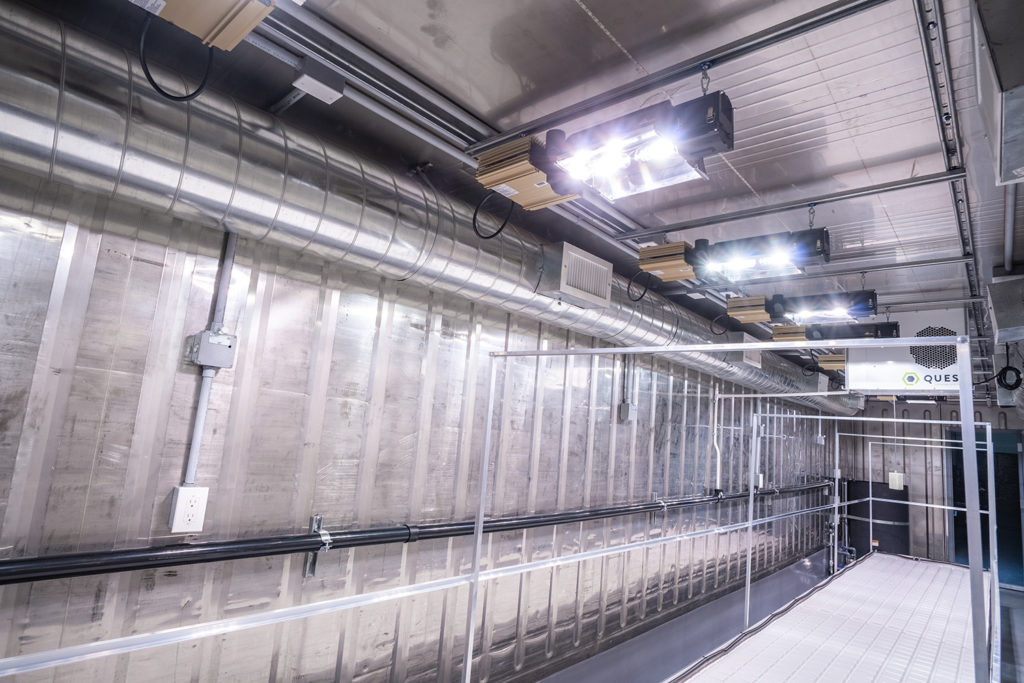Future of Growing Lights Technology for Indoor Farms
Vertical farming is the next big thing in modern agriculture. It could well be a kind of revolution, taking everything we know about farming outside and using modern technology to bring it indoors - warehouses, hangars, abandoned buildings, even recycled shipping containers can now be used to build your own indoor farm.
The benefits are many - better control gives you fresher food, multiple harvests per year and potentially no losses in transport. It literally brings the farm to the city, even to the city block.
The economics of vertical farms are evolving. But it’s clear that CAPEX can be high and a lot of focus is on minimising OPEX. After staff costs, energy costs will be the biggest cost concern for most vertical farms and with intense lighting on 24/7 this can ramp up. Evidently your energy provider may provide some support and most owners can optimize energy use through using solar power or even geothermal.
Even so, for all types of operation availability of affordable, sophisticated lighting technologies is fundamental to the creation of a perfect indoor farming environment. Let’s take a closer look.

What is a Grow Light?
In simple terms, this is an artificial source of light, almost always electric, which is specifically designed to stimulate the growth of plants. They can be used in situations where you need additional light or to provide all light requirements. For example, many greenhouses would use “top up” grow lights in winter to extend the sunlight hours. In large indoor farms, they can completely replace natural light. As grow lights are often optimized to the plant and even the particular stage of growth, they can even out-perform sunlight.
The Three Types of Grow Light for Indoor Farms
- Fluorescent Grow Lights are a popular choice for indoor growing. They come in two main types, fluorescent tubes and Compact Fluorescent Lights (CFLs). Fluorescent tubes are common and can be acquired in different intensities. They are common in households and tubes can last longer than standard bulbs. They can be useful as the tubes are thin enough to fit into awkward places but the fittings usually require a stand to be built which affects installation costs.
CFLs are also common in homes and offices and are by far the cheapest light available. CFLs use only 20 to 30% of the energy consumed by traditional incandescent bulbs and their lifespan is six to eight times longer. A major advantage is that they emit very little heat which means they can be placed very close to plants which would burn under fluorescent or other kinds of light - High-Pressure Sodium (HPS) lights have grown in popularity and are overtaking fluorescent tubes and bulbs thanks to their reliability and tremendous light output. These lights are very common among commercial and experienced indoor growers. The major downside is that they produce lots of heat which can burn plants.
- LED grow lights are the most energy-efficient among all three basic types of grow lights and have a heat production close to zero. They can be easily attuned to the plant and for many plants are even better than daylight. Downsides can be the cost which, although dropping, is a significant upfront factor. LED Light can be harmful to humans which means staff will need protective gear.
Which do I choose?
If you’re new to indoor farming, CFL may be best. available in many wavelengths, the CFL is perfect for use at almost all stages of plant development. If you work on a larger scale LEDs will reduce operation cost by up to 70%. For most vertical farms LED will be the de facto choice.
Next steps
Lighting is a critical aspect for creating a perfect indoor farming environment. So, it’s highly recommended that you spend enough time planning and designing the layout of your plants and lights. The aim is that the design should be optimized so that no light will be wasted - this can be done by ensuring there is space to put lighting amongst plants and also ensuring that they can be moved as the plants grow.
You can also use white surfaces to reflect as much light as possible and use light movers to distribute light as space allows.
Finally, you need to keep up with developments. LED lighting is becoming more efficient and cheaper with every passing month and new developments like solar grids will make energy for container farms cheaper still.
Address
Micro Lab Farms
3353 Needles Hwy
Needles, CA
(951) 266-6096
